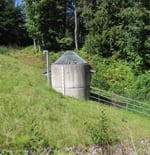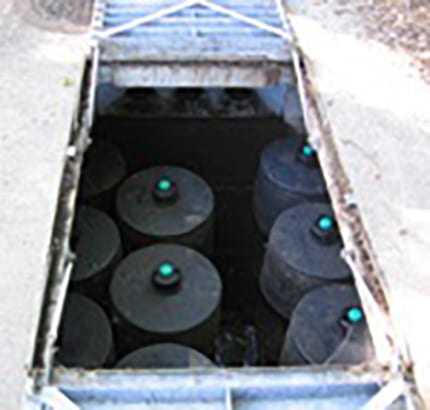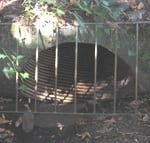The City of Bellingham drainage system is comprised of natural and manufactured conveyance and detention systems. Natural conveyance systems include creeks and lakes that receive and channel runoff from rain and other sources. Manufactured conveyance systems consist of a network of open ditches, catch basins, closed pipes, manholes, and water quality facilities such as ponds, vaults, storm filters, and bios-wales. These two systems work in concert to control the quantity and improve the quality of runoff before it is discharged into major streams, lakes and Bellingham Bay. The system is maintained by the Stormwater Division of Public Works. Work performed on the drainage system generally falls into one of nine categories described below.
Open Ditch Cleaning
Open ditches are inspected each year to ensure that proper flow is maintained. If an inspection identifies a need for maintenance, City crews schedule time to do the maintenance throughout the year as time permits.
Catch Basin Pumping
Best management practices (BMPs) dictate pumping every catch basin and manhole once each year. To accomplish this, Public Works uses a Vactor truck and crew to remove sediment and debris from the system. Material removed from catch basins and manholes is considered a low to moderate risk waste and is disposed of accordingly.
Storm Line Jetting
The Vactor truck and crew also accomplish this task. High pressure water runs through the storm main lines to remove any accumulated material. This material is then removed from the system when the catch basins and manholes are pumped.
Trash Rack Cleaning & Storm Patrol
Trash racks are installed at the entrance to large storm lines to intercept and trap trash and organic debris before it enters the enclosed pipe system. Trash racks are patrolled on a set schedule as well as during and after storms. Storm patrol also includes cleaning debris from the grates on catch basins to ensure that water can freely enter the storm system. These two activities combine to create an effective means of controlling overflows and flooding within the system.
Tile, Frame, & Grate Repair
Periodically, the enclosed storm drainage system fails. These failures result from settling trenches, crushed mainlines, failing joints between pipe segments, root invasion or incorrect structures, such as old water tanks, that have been installed as culverts. City crews typically repair minor and emergency problems, while new construction, major repairs or replacements are done by private contractors working on behalf of the City.
Culvert Cleaning and Creek Drainage
Four main streams run through Bellingham; Chuckanut Creek, Padden Creek, Whatcom Creek and Squalicum Creek. Each creek has smaller streams (tributaries) draining into it. Maintenance consists of removing debris from the culverts that enable creeks to run under roadways. Examples of debris include log jams, beaver dams and buildup of sediment and gravel due to erosion. City crews may perform creek or channel dredging on a case-by-case basis if debris is excessive and presents a flooding hazard to neighboring areas. Dredging and other in-stream work must be closely coordinated with the Departments of Ecology, Fish and Wildlife, and other associated local, state, and federal agencies and is performed by Public Works crews on an infrequent basis and only with close coordination with these agencies.

Regional Detention Facility Maintenance
Regional detention facilities, and the associated flow control structures, are inspected and maintained yearly. This involves filling in low areas on dams and berms, filling and compacting rodent holes, removing vegetation that has grown within the facility and general inspection of the outfall and associated structures for defects. Over time, sediment can also build-up within detention facilities. City Crews identify affected facilities through the annual inspection process and generate work orders to schedule sediment removal on an as-needed basis.
Water Quality Facility Maintenance

Water quality facilities include detention ponds, storm filters, detention pipes and vaults, bioswales and various types of sand or gravel filters. Ponds and bioswales require annual vegetation maintenance and inspections similar to regional detention facilities. Detention vaults and fat pipes are inspected for sediment accumulation and require periodic cleaning using the Vactor truck. Storm filters require frequent cleaning to remove accumulated sediment and are inspected to monitor their effectiveness and life span. Filter replacements are done annually.
Large Scale Improvements
Public Works Engineering oversees large scale improvements done by private contractors under contract with the City.
Additional Information
Questions or problems with the drainage system should be reported to the Public Works Operations Division.

